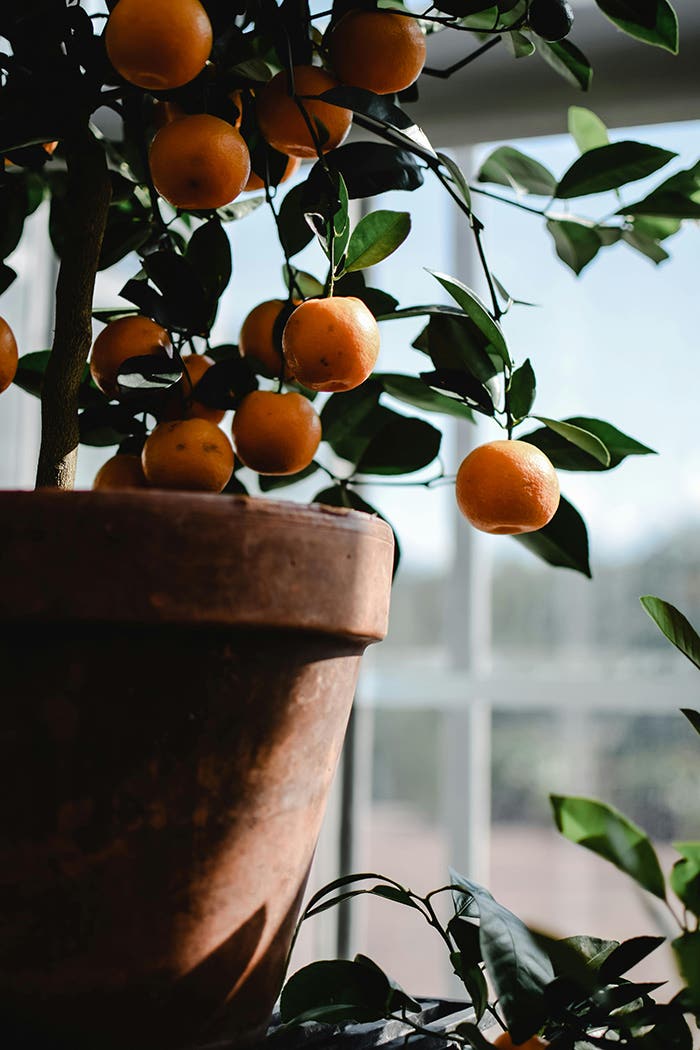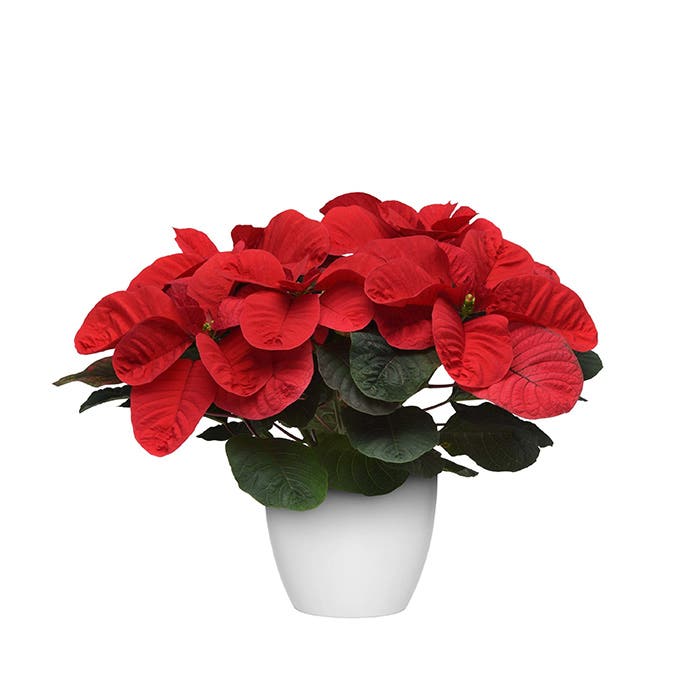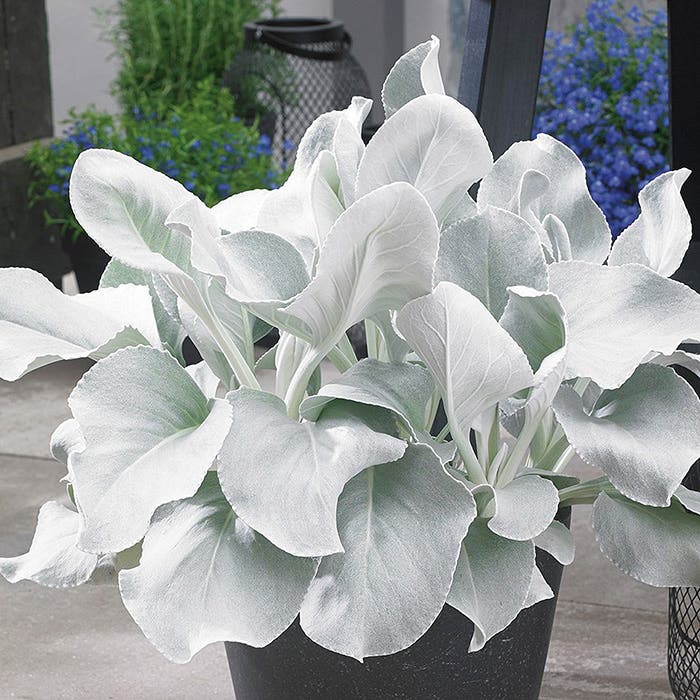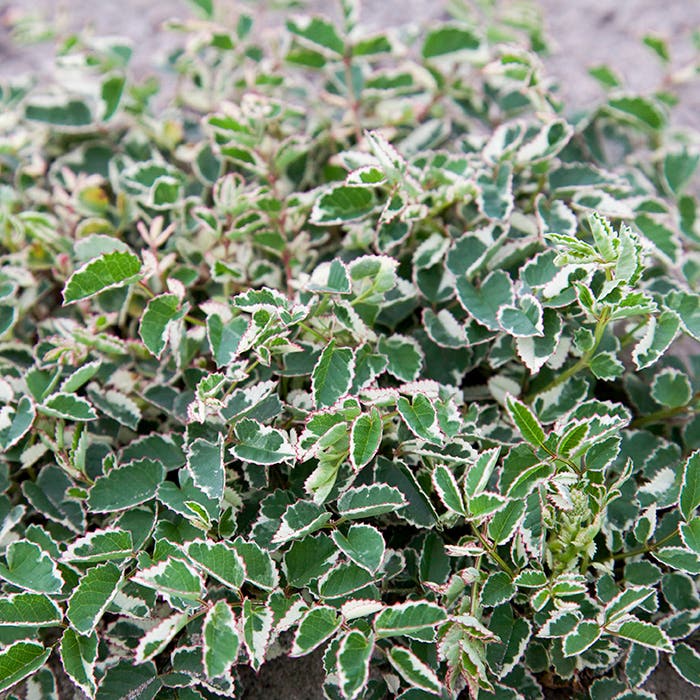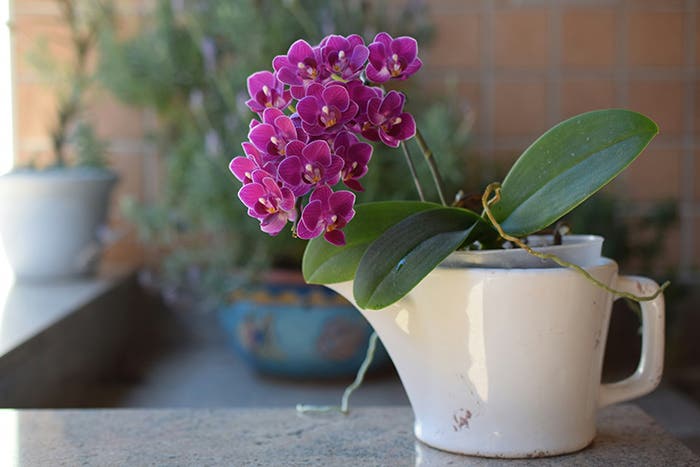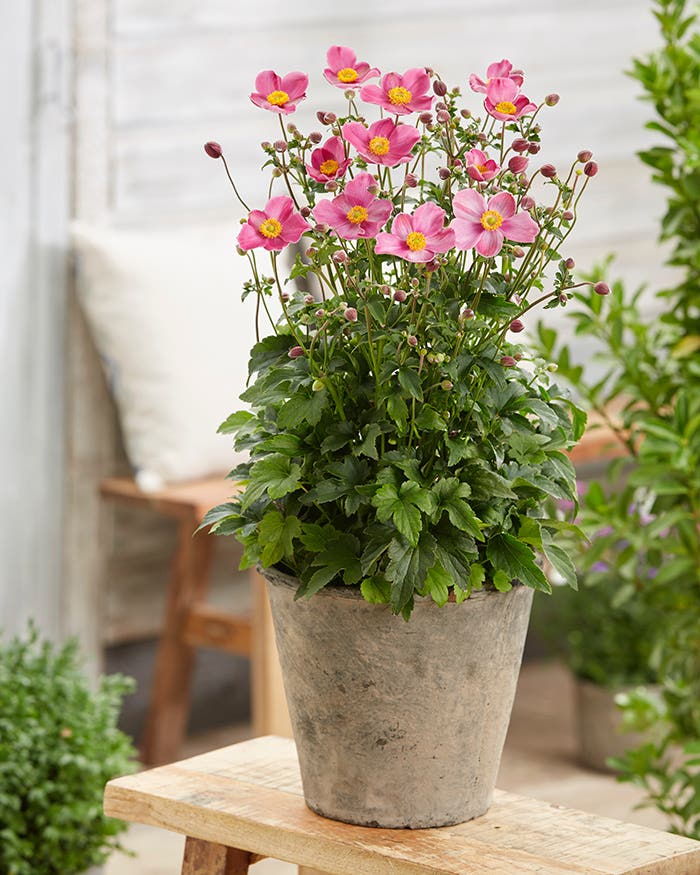Add Garden Style Indoors with a Large Houseplant
Our top 7 sizable houseplants.
You don't have to go all in on collecting houseplants to enjoy the benefits these leafy roommates bring. Perhaps you lack the time or interest to tend a full-blown collection of indoor plants, or you lack the deep windowsills that facilitate their display.
In either of these cases, one or two large houseplants may be just the trick to adding a bit of botany to your interior space. They'll need just a little care each week, and though they're big, they can be more convenient to place than their smaller counterparts, because they can be stood directly on the floor—no windowsill or topsy-turvy plant stand required.
Here are some favorite large houseplants to try. Most of these are easy to grow. The natural origins of each plant is listed to help guide care.
1. Snake plant (Dracaena trifasciata)
Snake plants have stiffly upright, swordlike leaves that can be edged or striped in gold, silver or shades of green, depending on the cultivar. They can reach at least three feet tall. (Be aware there are a few dwarf cultivars, including ‘Hahnii’, that top out at just six inches.)
Native to rocky, dry areas of western central Africa, this tropical succulent can cope with long lapses in watering as well as low light. Brighter light will evoke the best leaf coloration and possibly even a spike of green-white flowers. It can be a slow grower, especially in a dim spot—all the more reason to start with a larger specimen. Wait until it’s rootbound to move a snake plant into a slightly larger pot.
2. Fiddle-leaf fig (Ficus lyrata)
Large, broad green leaves with prominent veins are the trademark of this popular plant. In its natural habitat (the tropical rain forests of Western Africa), this is a tree that can reach 50 feet tall. Heights of 6 to 8 feet are typical indoors.
Fiddle-leaf fig needs bright light and even moisture. With these needs met and regular feeding during the warmer months, it will put on rapid growth. It can be pruned, but it will briefly weep an irritating milky sap, so wear gloves and have a towel handy. More on fiddle-leaf fig.
3. Rubber plant (Ficus elastica)
This ficus can be kept bushy or grown as a tree. It typically has sturdy, deep green, very glossy leaves, but there are some cream- and pink-variegated cultivars. With regular repotting, unpruned rubber plants can reach nine feet tall on a single stem. Trimming will result in a shorter plant with multiple stems.
Rubber plant hails from rain forests and hills of eastern India and southern Asia, including Southeast Asia. It can take low light, but it will do better, with more compact growth, in a spot with indirect sun. Variegated types need bright light. Allow the potting mix to dry before watering. To prompt bushy growth, snip off the top of the central stem. Like fiddle-leaf fig, this plant will bleed when cut.
4. Swiss cheese plant (Monstera deliciosa)
The leaves can reach 24 inches wide, and they develop holes and deeply cut edges and holes. A climber at heart, swiss cheese plant becomes lanky without pruning, and it can grow on a moss pole or a suspended piece of twine to 10 feet or more.
With its native habitat the tropical rain forests of Central America and Mexico, Monstera deliciosa needs regular water and bright light. It will benefit from some direct sun in the winter. It develops aerial roots that both help it climb and absorb moisture from the atmosphere, so try to add humidity. Train it to climb a moss pole by pushing some of the aerial roots into the moss. This plant can also be cut back to reduce its size.
5. Umbrella tree (Schefflera arboricola)
Umbrella tree earns its common name from its foliage: compound leaves made up of a handful of narrow leaflets arranged in a circle. Cultivars range from deep green to marked with cream, yellow or white. It typically grows between three and six feet tall in an indoor container.
Umbrella tree grows well in bright light out of direct sun. Moderate moisture should be maintained—it naturally grows along stream banks and in wet forests in its native lands of China and Taiwan. Overall this is an easy, undemanding plant. With high humidity it may grow aerial roots that will enter the potting mix once they reach it.
6. Parlor palm (Chamaedorea elegans)
Grown as a clump of multiple stems topped with long, narrow leaves, parlor palm looks similar to bamboo. It can reach six feet or taller in a pot.
Parlor palm tolerates low light, though it prefers a brighter spot (out of direct sun). Provide even moisture, taking care not to overwater. This species comes from the tropical rain forests of southern Mexico and Central America.
7. Bird of paradise (Strelitzia reginae)
Growing as a clump of handsome deep green, paddle-like leaves top tall stalks, it looks a bit like a banana plant (Musa). Slits in the leaves are normal. Beaked flowers inspire the common name bird of paradise, but these don’t typically occur indoors. The leaf stalks can grow to five feet tall or more under container culture indoors.
Hailing from riverbanks and thickets of the eastern coast of South Africa, this plant requires bright light and prefers some direct sun. Regular watering and higher humidity will keep it healthy and promote quicker growth. Bird of paradise may flower indoors if it is mature enough, potbound and receiving enough warmth, light and humidity.


